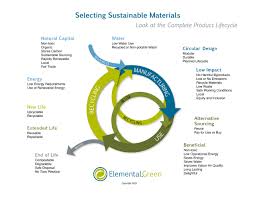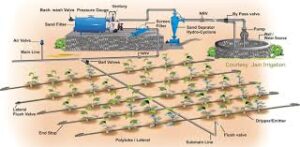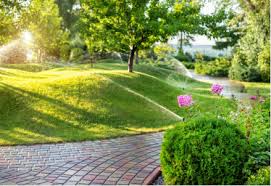As we step into 2024, environmental consciousness is becoming increasingly important in all aspects of life, including garden design. Eco-friendly gardens not only enhance the beauty of our outdoor spaces but also contribute to the health of our planet. By integrating sustainable practices into your garden design, you can create a space that is both beautiful and environmentally responsible. This comprehensive guide explores innovative and practical eco-friendly garden design ideas for a sustainable 2024.

1. Choosing Sustainable Materials

1.1. Recycled and Reclaimed Materials
Utilizing recycled and reclaimed materials is a key aspect of eco-friendly garden design. These materials reduce the need for new resources and minimize waste.
- Recycled Wood: Use reclaimed wood for garden structures such as fences, raised beds, and benches. This not only adds character to your garden but also helps reduce deforestation.
- Recycled Plastic: Opt for garden furniture and planters made from recycled plastic. These items are durable and reduce the need for virgin plastic production.
1.2. Sustainable Hardscaping
When designing pathways and patios, consider using sustainable hardscaping materials that have a lower environmental impact.
- Permeable Pavers: Choose permeable pavers for pathways to allow rainwater to seep through and reduce runoff.
- Bamboo: Bamboo is a fast-growing, renewable resource that can be used for garden structures like trellises and fences.

2. Incorporating Native Plants
2.1. Benefits of Native Plants
Native plants are well-suited to local climates and soil conditions, making them a great choice for eco-friendly gardens. They require less water, fertilizers, and pesticides compared to non-native species.
- Drought-Tolerant Varieties: Select drought-tolerant native plants that can thrive with minimal water. This reduces the need for irrigation and helps conserve water.
- Pollinator-Friendly Plants: Incorporate plants that attract pollinators like bees and butterflies. This supports local ecosystems and enhances biodiversity.
2.2. Creating Habitat Spaces
Design your garden to provide habitat spaces for local wildlife. This can include creating nesting sites and providing food sources for birds, insects, and small animals.
- Wildlife Habitats: Add birdhouses, bat boxes, and insect hotels to create a welcoming environment for wildlife.
- Native Flower Beds: Plant native flower beds that offer nectar and pollen to attract and support pollinators.

3. Water Conservation Techniques

3.1. Rainwater Harvesting
Rainwater harvesting is an effective way to conserve water and reduce your reliance on municipal water supplies.
- Rain Barrels: Install rain barrels to collect and store rainwater from downspouts. This water can be used to irrigate your garden during dry periods.
- Rain Gardens: Design rain gardens to capture and filter runoff water. These gardens use native plants and soil to absorb rainwater and reduce erosion.
3.2. Efficient Irrigation Systems
Adopt efficient irrigation systems to minimize water usage and ensure that plants receive the right amount of water.
- Drip Irrigation: Use drip irrigation systems to deliver water directly to the roots of plants, reducing evaporation and runoff.
- Soaker Hoses: Soaker hoses release water slowly and evenly along their length, making them ideal for watering garden beds and rows.

4. Soil Health and Composting
4.1. Improving Soil Health
Healthy soil is the foundation of a successful garden. Focus on practices that enhance soil fertility and structure.
- Organic Matter: Add organic matter such as compost, mulch, and aged manure to improve soil health and support plant growth.
- Cover Crops: Plant cover crops like clover and rye to prevent soil erosion and add nutrients to the soil.
4.2. Composting
Composting is a sustainable way to recycle kitchen scraps and garden waste into valuable fertilizer for your garden.
- Kitchen Composting: Use a kitchen compost bin to collect vegetable scraps, coffee grounds, and eggshells for composting.
- Garden Composting: Set up a compost pile or bin in your garden to process yard waste, leaves, and grass clippings.

5. Energy-Efficient Lighting
5.1. Solar-Powered Lighting
Solar-powered lighting is an eco-friendly option for illuminating your garden. These lights harness solar energy and require no electricity.
- Solar Path Lights: Install solar path lights along walkways and garden beds to provide gentle illumination without increasing your energy bills.
- Solar Garden Lamps: Use solar garden lamps to highlight focal points and create ambiance in your outdoor space.
5.2. LED Lighting
If you prefer electric lighting, opt for LED lights, which are more energy-efficient and have a longer lifespan than traditional bulbs.
- LED String Lights: Use LED string lights for decorative lighting in your garden. They consume less energy and last longer than incandescent lights.
- Motion-Sensor Lights: Install motion-sensor LED lights to provide security and lighting only when needed, reducing energy consumption.

6. Sustainable Garden Maintenance

6.1. Eco-Friendly Pest Control
Avoid using chemical pesticides and opt for natural pest control methods that are safer for the environment.
- Beneficial Insects: Introduce beneficial insects like ladybugs and lacewings that prey on garden pests.
- Organic Pesticides: Use organic pest control solutions such as neem oil or insecticidal soap to manage pest problems.
6.2. Efficient Lawn Care
Reduce the environmental impact of lawn care by adopting sustainable practices.
- Lawn Alternatives: Consider replacing traditional grass lawns with low-maintenance ground covers or native grasses that require less water and mowing.
- Electric or Manual Tools: Use electric or manual lawn care tools to reduce emissions and noise pollution.

Conclusion
Designing an eco-friendly garden for 2024 involves integrating sustainable practices, choosing the right materials, and focusing on conservation. By incorporating recycled materials, native plants, and efficient water and energy systems, you can create a garden that is both beautiful and environmentally responsible. Embracing these eco-friendly garden design ideas will not only enhance your outdoor space but also contribute to a more sustainable future.
Whether you’re redesigning your existing garden or starting from scratch, these tips will guide you in creating a garden that reflects your commitment to sustainability and environmental stewardship



